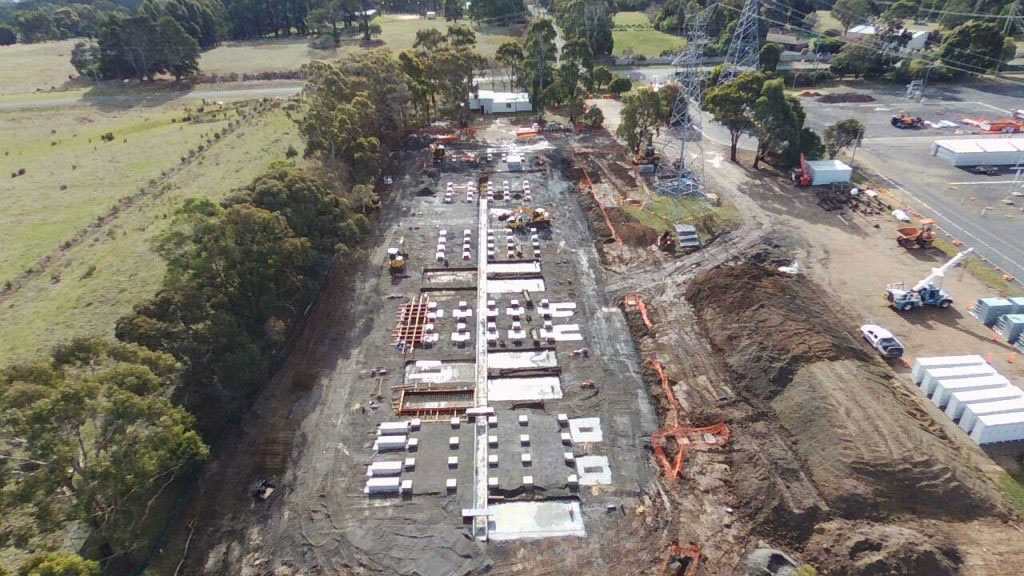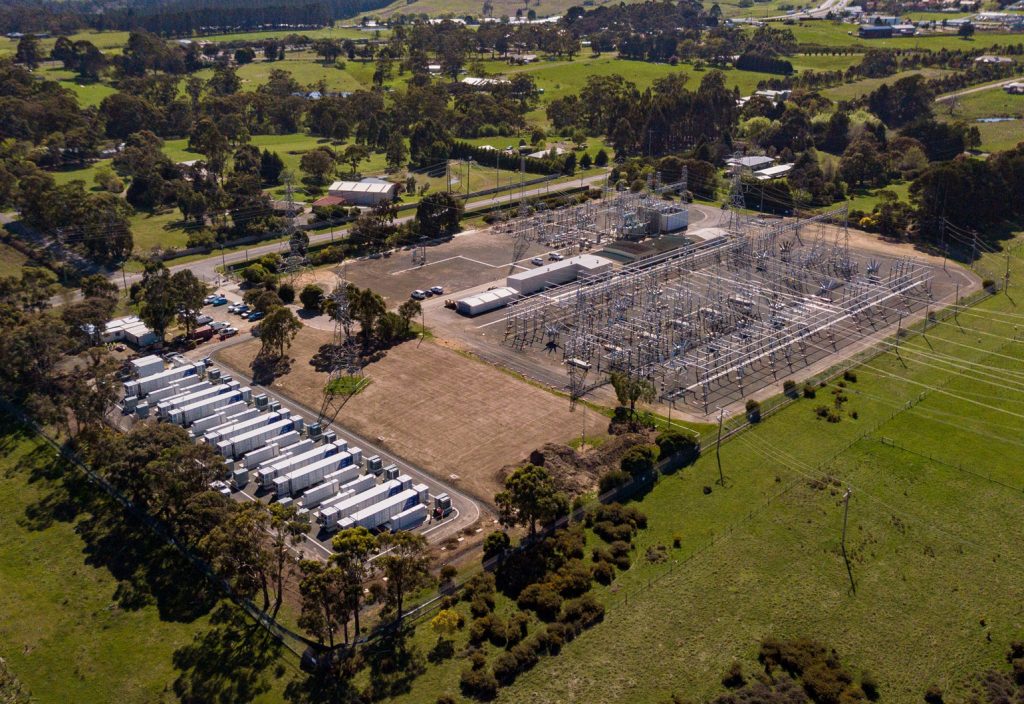The Victorian Government has launched the state’s first large-scale lithium-ion battery, capable of powering more than 20,000 homes for an hour during peak demand.
The 30 MW/30 MWh Ballarat Energy Storage System (BESS), located in western Victoria, consists of nine custom-built enclosures housing batteries, the operating system and environmental controls, as well as cooling, security and safety systems.
BESS is the first of two grid-scale batteries announced by the State Government in March. The second is a Tesla 25 MW/50 MWh battery at the 60 MW Gannawarra Solar Farm near Kerang in northwest Victoria.
Both batteries are expected to be online in time for increased demand during the hot summer months and will be operated by EnergyAustralia under long-term offtake agreements.
The Gannawarra battery is the first to be co-located with a solar farm in Victoria. The first in Australia was claimed by Queensland in February with the commissioning of the Lakeland solar and storage project on the Cape York Peninsula, which combines a 13 MW solar array with 1.4 MW/5.3 MWh of lithium-ion battery storage.
Energy Minister Lily D’Ambrosio said in a media release that the batteries are part of the State Government’s plan to transition to a more affordable, reliable and clean energy system.
“We’re modernising our electricity grid, strengthening our energy security and delivering real action on climate change,” she said.

Ballarat’s local media reported D’Ambrosio said the battery will help ensure energy supply to meet demand with less costly network upgrades than would otherwise be required.
“It ensures we have the fast, rapid response for energy supply to mitigate against increased cost of infrastructure upgrades along the network,” she said.
Following its official opening, BESS will undergo final testing before becoming fully operational.
Batteries improving grid stability
The Victorian batteries have been funded to the tune of $50 million, with the State Government’s $25 million contribution matched by a grant from the Australian Renewable Energy Agency (ARENA).
According to ARENA CEO Darren Miller, BESS will help increase the stability of the western Victorian grid.
“This battery will help to ease constraints on transmission lines in western Victoria that currently curtail the output of wind and solar, while also helping to bring in more renewables to the grid,” Miller said.
Miller cited the success of South Australia’s massive Tesla 100 MW/129 MW battery to emphasise the importance of large-scale batteries in providing short-term energy storage and rapid-response power injections to stabilise the grid.
The Australian Energy Market Operator (AEMO) recently told the ABC that the South Australian battery has exceeded expectations in dispatching power much more rapidly and precisely than conventional thermal power stations.
“We’ve been pleasantly surprised and would encourage more of this technology into the grid,” said AEMO General Manager of Operations Damien Sanford.
AEMO stated the South Australian battery is unprecedented in providing small adjustments to balance supply and demand as well as maintain operating frequency at close to 50 Hz – known as frequency control ancillary services (FCAS). While conventional power stations take seconds to make these adjustments, the battery takes milliseconds.
The market operators has also given the mega-battery a big share of the credit for reducing the cost of FCAS by 57 per cent ($33 million) in the first quarter of 2018. This was a good return on the South Australian Government’s annual $4 million commitment to purchase stored power from the battery as an emergency reserve.
The ARENA project description said the BESS project will also investigate providing grid services such as FCAS.
